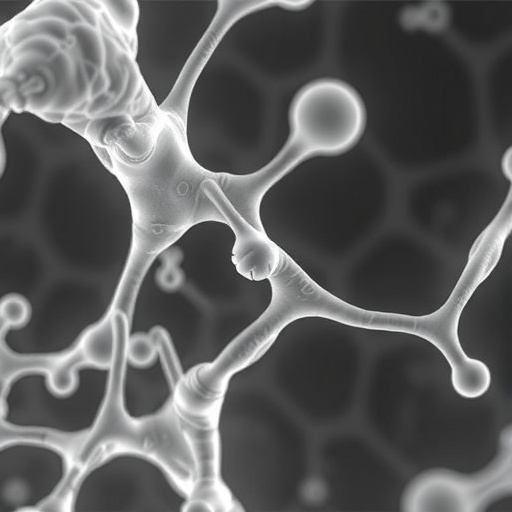In a groundbreaking study that delves deep into the phenomena of shear-induced hemolysis, researchers have embarked on an essential exploration to quantify the experimental variability associated with this critical process. Hemolysis, the rupture of red blood cells, is a pivotal concern in various medical applications, particularly in the fields of cardiology and transfusion medicine. The research conducted by Blum, Mous, Steinseifer, and their colleagues aims to provide a comprehensive understanding of the parameters that influence hemolysis, thereby aiding in the development of more accurate and reliable hemolysis models.
Understanding the mechanics of shear-induced hemolysis requires a fundamental grasp of the conditions under which red blood cells operate. These cells are subjected to various mechanical forces, particularly shear stresses, during their passage through blood vessels or medical devices such as pumps and artificial hearts. When the shear stress exceeds a specific threshold, it can lead to the rupture of these cells, releasing hemoglobin and other intracellular components into the bloodstream. Such occurrences can lead to significant complications, making it imperative to understand the factors that contribute to this mechanical failure.
The study meticulously analyzes the experimental setups typically employed to gauge hemolysis under shear conditions. Researchers have identified that variability in experimental results can stem from a myriad of sources, including the design of flow apparatus, the characteristics of the blood sample, and even the environmental conditions during experimentation. This variability has historically posed challenges in quantifying hemolysis effectively, often leading to discrepancies in findings and misinterpretations of clinical implications.
To address these challenges, the research team implemented advanced statistical methodologies alongside rigorous experimental protocols. By utilizing a range of blood samples and meticulously controlling the environmental factors, they aimed to create a robust dataset that accurately reflects the complexities of hemolysis under shear stress. This approach is critical as it allows for a more strategic analysis of the contributing factors and paves the way for improved predictive models.
One of the significant findings from the research is the identification of a range of shear stress levels that can induce hemolysis. The correlation between shear stress magnitude and the extent of hemolysis was meticulously plotted, revealing a non-linear relationship that underscores the complexities of this biological phenomenon. As shear stress increases, the risk of hemolysis also rises, but the rate of this increase is not uniform across all conditions. This insight is vital for the medical community, especially when designing devices that interact with blood flow.
Moreover, the study emphasizes the importance of environmental parameters, such as temperature, pH, and ionic concentration, in modulating hemolysis. These parameters can alter the structural integrity of red blood cells and, consequently, their susceptibility to hemolytic damage. Researchers conducted a series of controlled experiments, varying these conditions to observe their direct impact on hemolysis rates. These investigations revealed that even slight alterations in environmental conditions could lead to significant changes in hemolysis outcomes, further illustrating the intricacy of biological systems.
Another compelling aspect of the study is the validation of existing hemolysis models through the newly acquired data. The researchers sought to refine these models by incorporating the variability observed in their experiments. Traditional models often assume a static set of conditions, which can lead to oversimplifications. By introducing factors such as shear-induced variability, their research offers an updated framework for understanding and predicting hemolytic events.
The implications of this research extend beyond theoretical models; they carry significant clinical relevance. In a clinical setting, the knowledge gained from this study could enhance the design and deployment of blood-contacting devices. By understanding the conditions that exacerbate hemolysis, engineers and clinicians can collaboratively work to mitigate risks associated with blood loss and hemolytic reactions.
This research also sparks a broader conversation about patient safety and quality control in medical device manufacturing. For instance, the insights derived from quantifying variability could inform best practices, ensuring that devices are engineered with optimal safety parameters in mind. The collaboration between researchers in biomedicine and engineers in device design is crucial to advancing this field and enhancing patient outcomes.
Furthermore, this study serves as a call for ongoing research into hemolysis and its underlying mechanics. While the findings are significant, they also highlight myriad questions that remain unanswered, necessitating further investigation into the biochemical pathways that govern hemolysis under stress. The continuous exploration of these mechanisms could lead to novel therapeutic strategies to protect red blood cells from shear-induced damage.
In summary, the work conducted by Blum, Mous, Steinseifer, and their team marks a pivotal advancement in the understanding of shear-induced hemolysis. By quantifying experimental variability, the study provides essential insights that can significantly influence future research and medical practices. As biomedical engineering continues to evolve, the integration of such comprehensive research will be key to innovating safer medical devices and improving patient care.
Crucially, the study emphasizes that while technology can enhance patient outcomes, it is imperative to maintain a strong foundation in understanding biological responses. As researchers and clinicians continue to navigate the complexities of hemolysis, the ultimate goal remains clear: to safeguard the health and wellbeing of patients through informed and innovative healthcare solutions.
With a strong focus on advancing scientific understanding and improving patient safety, this research contributes vital knowledge to the ongoing dialogue in hemolysis research. As more studies like this emerge, the potential to reduce hemolysis-related complications grows, promising a future where patient risk is minimized, and medical technologies are optimized for human biology.
The findings from this research will undoubtedly resonate not just within the confines of academic journals but will also ripple through the entire medical community, fostering a collective effort toward better, safer healthcare solutions.
Subject of Research: Shear-Induced Hemolysis
Article Title: Quantifying Experimental Variability in Shear-Induced Hemolysis to Support Uncertainty-Aware Hemolysis Models
Article References:
Blum, C., Mous, M., Steinseifer, U. et al. Quantifying Experimental Variability in Shear-Induced Hemolysis to Support Uncertainty-Aware Hemolysis Models. Ann Biomed Eng (2025). https://doi.org/10.1007/s10439-025-03786-z
Image Credits: AI Generated
DOI: 10.1007/s10439-025-03786-z
Keywords: hemolysis, shear stress, blood, mechanical forces, biomedical engineering, patient safety, medical devices




